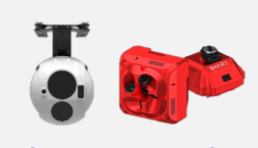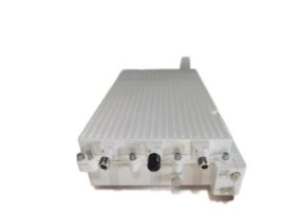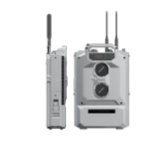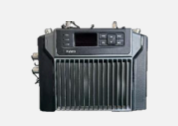AheadX QP555 Hybrid VTOL Drone
Medium Hybrid VTOL Drone

Introduce QP555 Hybrid VTOL Drone
The QP555 medium-sized drone emergency rescue platform has advantages over small drones in terms of long endurance and large payload. With longer loiter time, it can accomplish a greater variety of higher-performance tasks and carry heavier payloads, meeting the demands of more demanding emergency rescue scenarios. The QP555 medium-sized drone power distribution system can output 1000W of power for onboard equipment, enabling the mounting of high-performance emergency reconnaissance/communication equipment. It can mount electro-optical pods/pentacams, public network base stations, broadband self-organizing network equipment, PDT cluster base stations, satellite communication stations, search and rescue payloads, etc., further enhancing disaster area situational awareness, temporary communication recovery, and search and rescue capabilities.
AheadX QP555 Hybrid VTOL Drone Features
designed to meet your needs

Detail Parameters
more detail about AheadX QP537 eVTOL Surveillance Reconnaissance UAV and Load parameters
UAV Parameters

Fuselage Length
4.0 m
Wingspan
6.0 m
Max. Take-off Weight
130 Kg
Maxium Payload Weight
30kg Payload customizable
Power Systems
Gasoline Engine
Max Speed
140km/h
Maximum flight time
Endurance 7 hours with 30kg payload,15 hours with 10kg
Wind Resistance
Level 5 to 7 wind resistance
Practical Ceiling
7000 m
Climbing Speed
6 m/s
Payloads
Lidar,Photoelectric SAR ray
Payload Parameters

It can provide real-time transmission of visible light/infrared/wide-angle images on-site or real-time stitching of disaster scene images for three-dimensional modeling, allowing for immediate understanding of the disaster situation, disaster assessment, and providing firsthand data for emergency rescue.

Provide fast operator public network air-to-ground signal coverage to restore handheld mobile calls and network connections for disaster-affected populations.

Consisting of satellite subsystems, operator base station subsystems, and image transmission subsystems, it quickly establishes satellite communication coverage in disaster areas.

Addressing the communication needs of emergency personnel for portable communication terminals, rapidly establishing emergency communication cluster networks, and efficiently deploying rescue operations.

Rapidly establish text/voice/video communication between communication support personnel, drones, dispatch centers, and command centers to provide crucial information support for emergency rescue operations.

Search for target mobile phones within the scope of the disaster area mission to accurately locate the positions of affected individuals.

